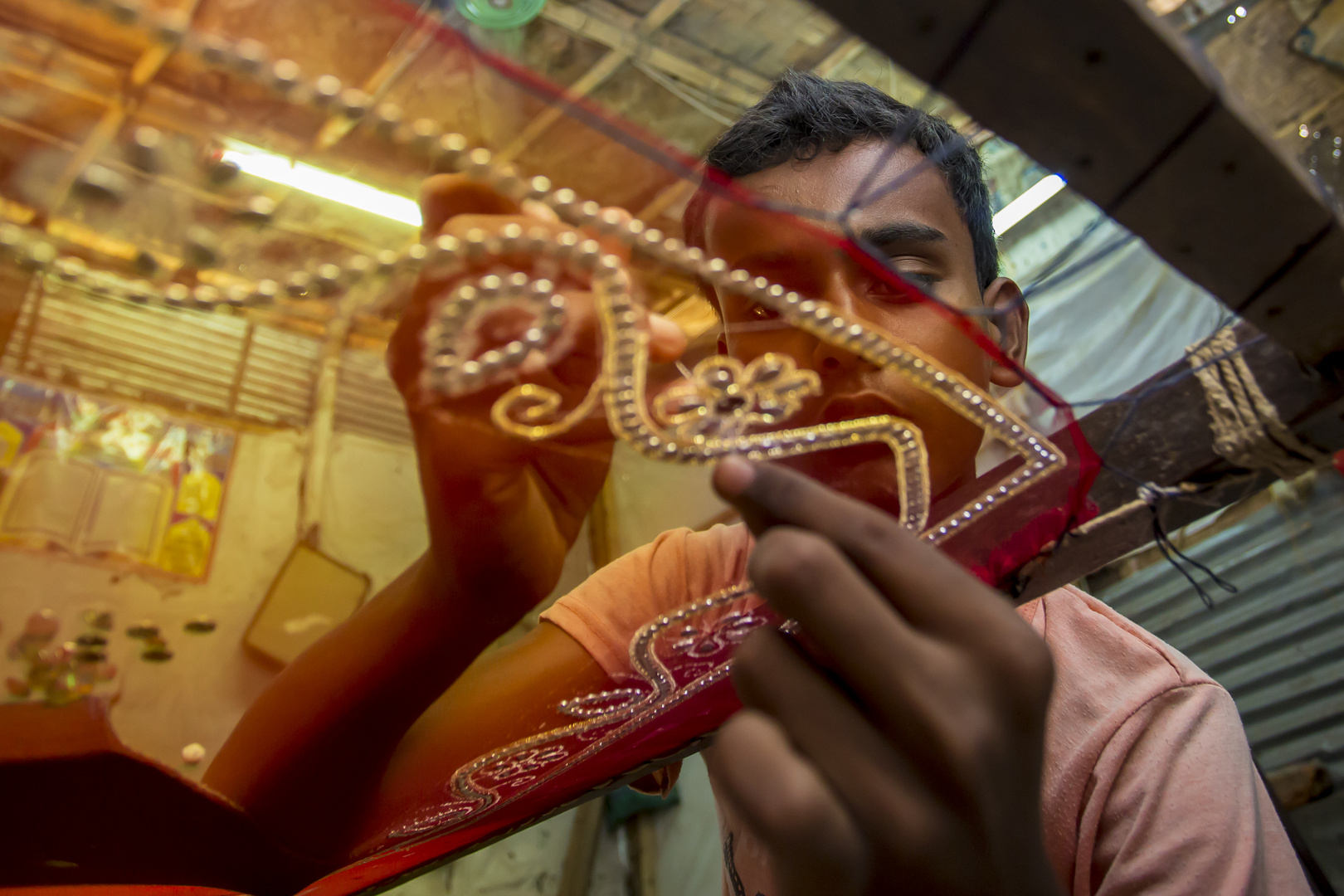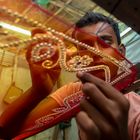A teenager (Rohit, 12 years) adds detail to a traditional Jamdani saree.
During partition in 1947 some 125 families migrated to Parbatipur of Rajshahi district and to various areas of Old Dhaka, Becharam Deuri, Kazi Alauddin Road, Kaiktuli, Tanti Bazar, Doyaganj and Gandaria from Benaras in India. And they brought along with them their skills of weaving the famous Benaroshi Sari. After independence of Bangladesh, the artisans who were in Dhaka started to live in the refugee camps of Mirpur and made their living from weaving saris. Gradually their small handloom industry began to expand and so did the production. Sari making in Mirpur gradually grew into big industry from what was initially cottage industry. Towards the late nineties, a big market also grew up alongside the sari-making units in Mirpur. This is now known as the Benaroshi Polli. Though the craft of making Benaroshi sari was brought in by non-Bengalis and they are the ones who knew this craft, gradually the number of Bengali artisans has also risen and at present the number of Bengali artisans is almost equal to those of non-Bengalis. Mirpur Benaroshi Polli is a makeshift market spread over section 10 to 11 of Mirpur. The market was developed by people migrated from Indian city of Benaras. Most of the weavers there are also from Indian state, Bihar. According to the traders, there are nearly 110 shops at the Palli. Some 20,000 weavers and salesmen are involved with the business directly. There are different types of saris available in the Mirpur Benaroshi Polli, Ranguli, Opera, Maslin Galaxy, Organza, and Peerless Katan. There are party and wedding saris also.








Comments 0
Delete comment
Delete comments and replies